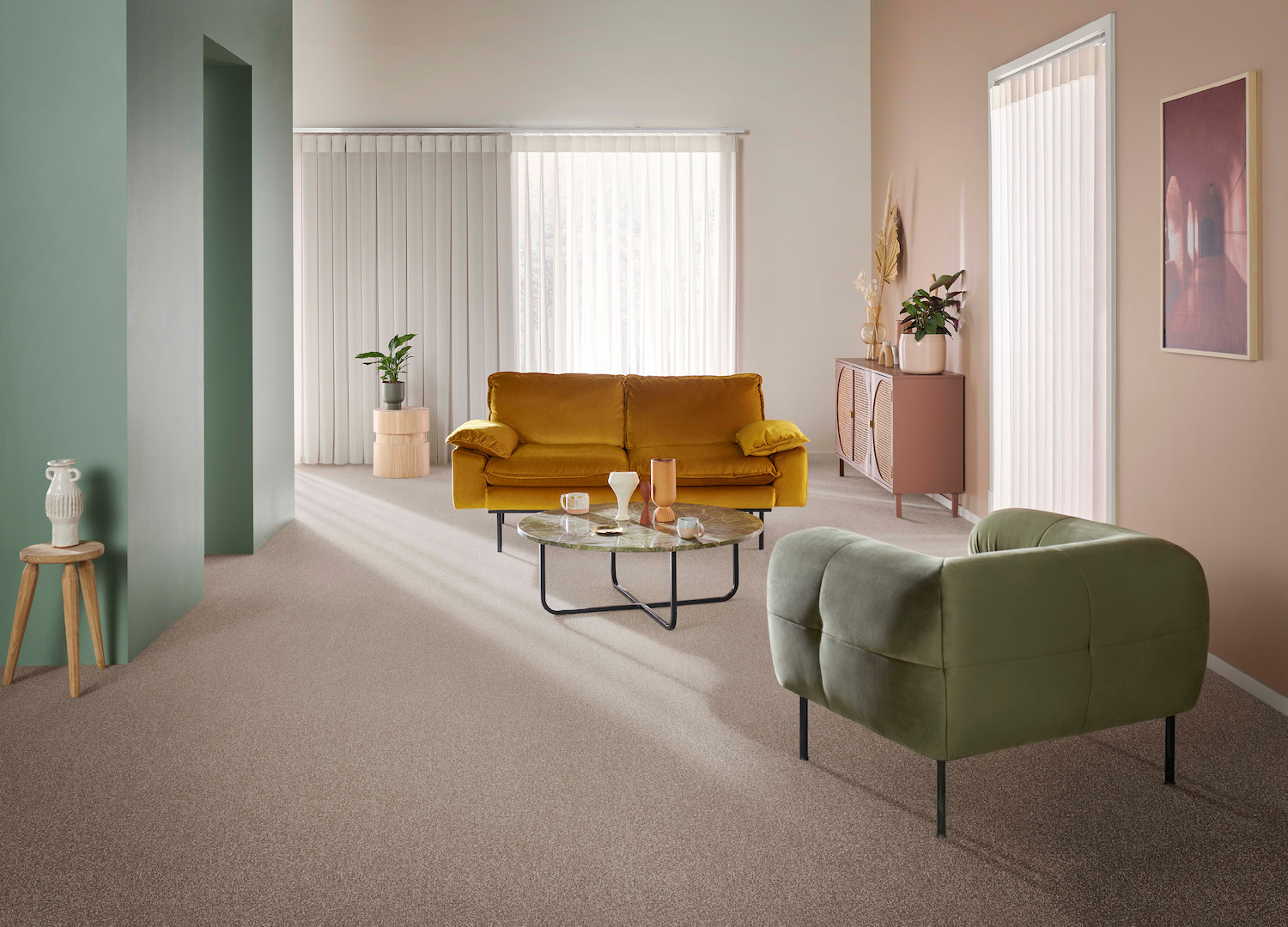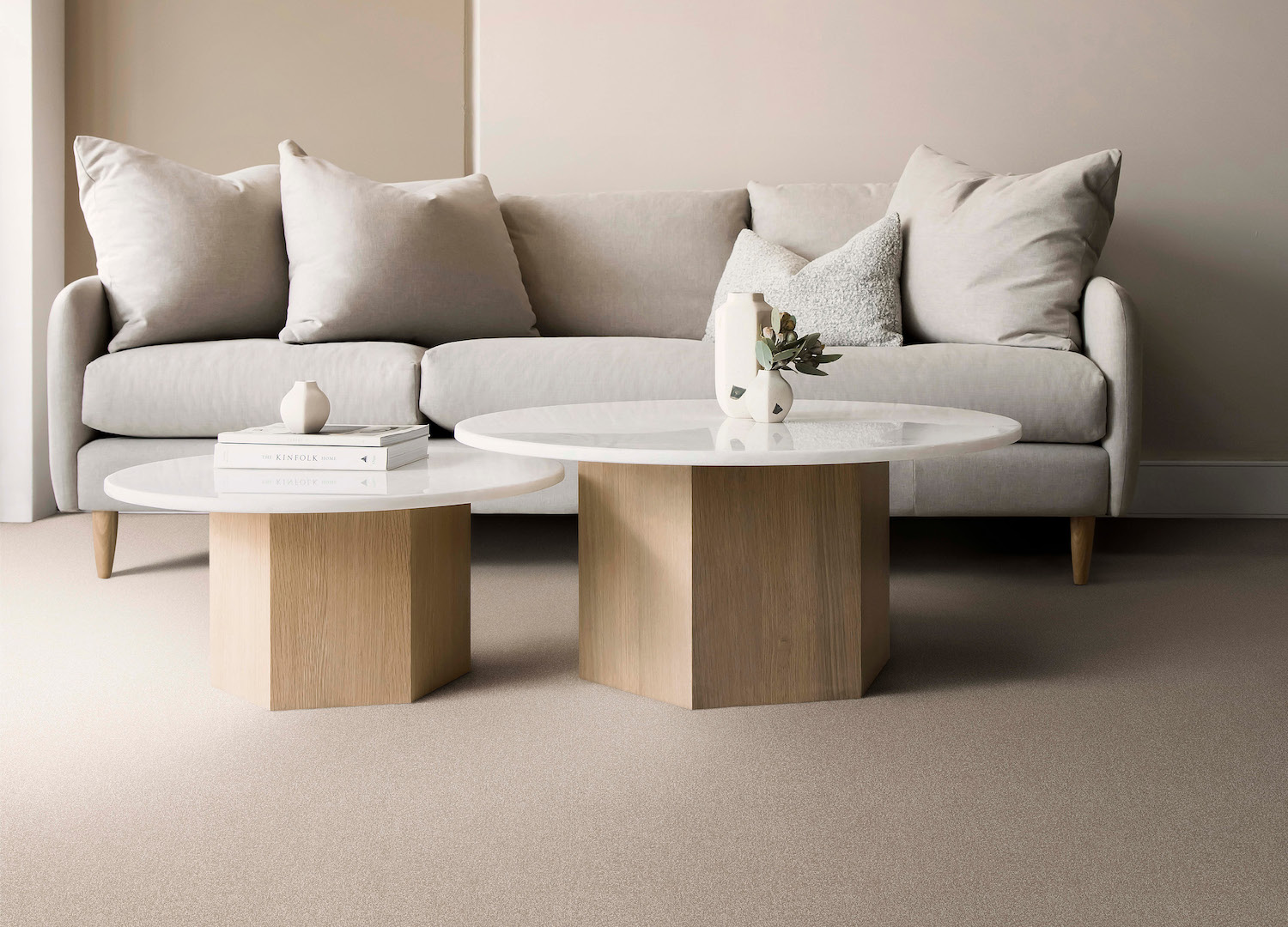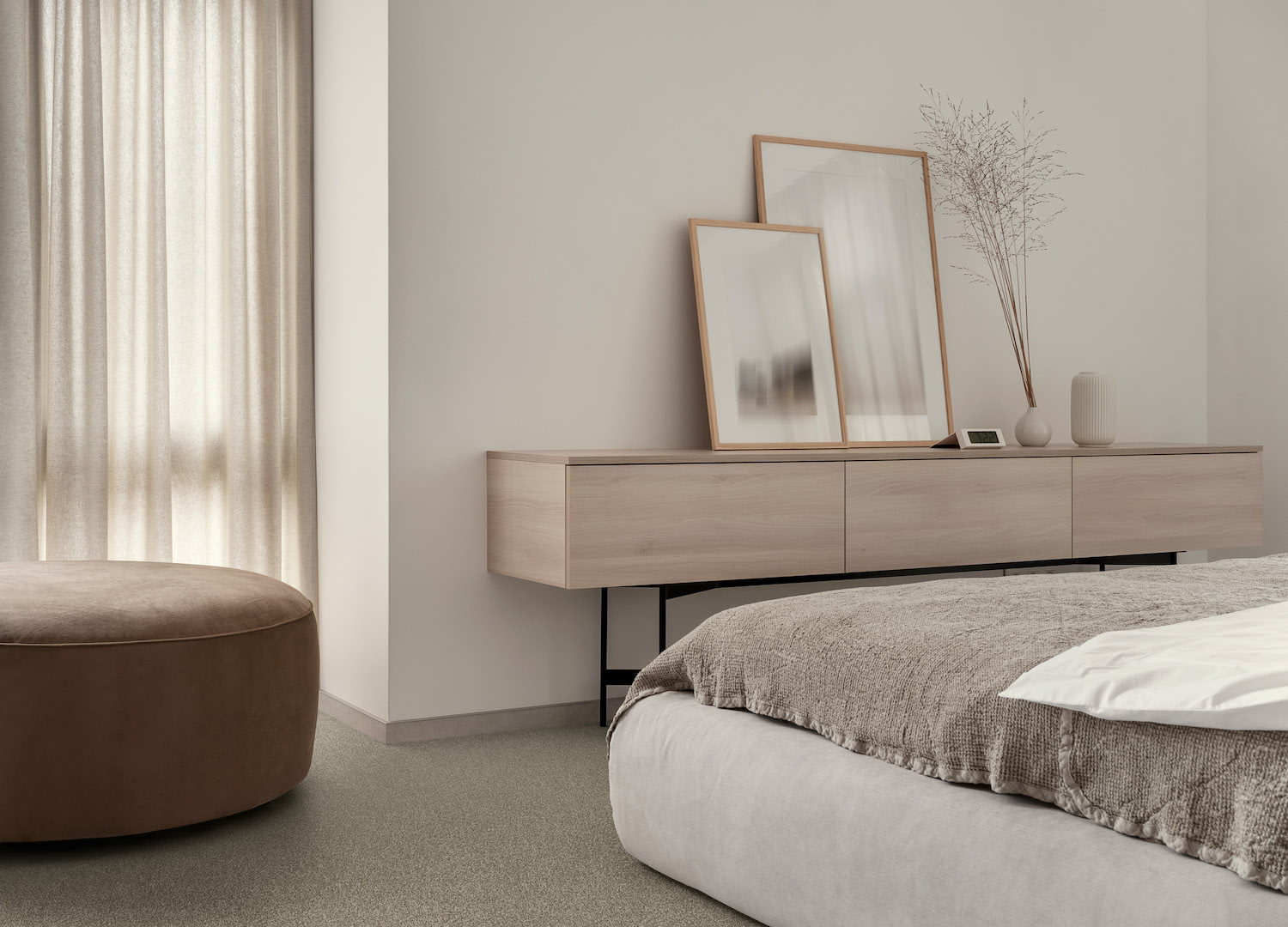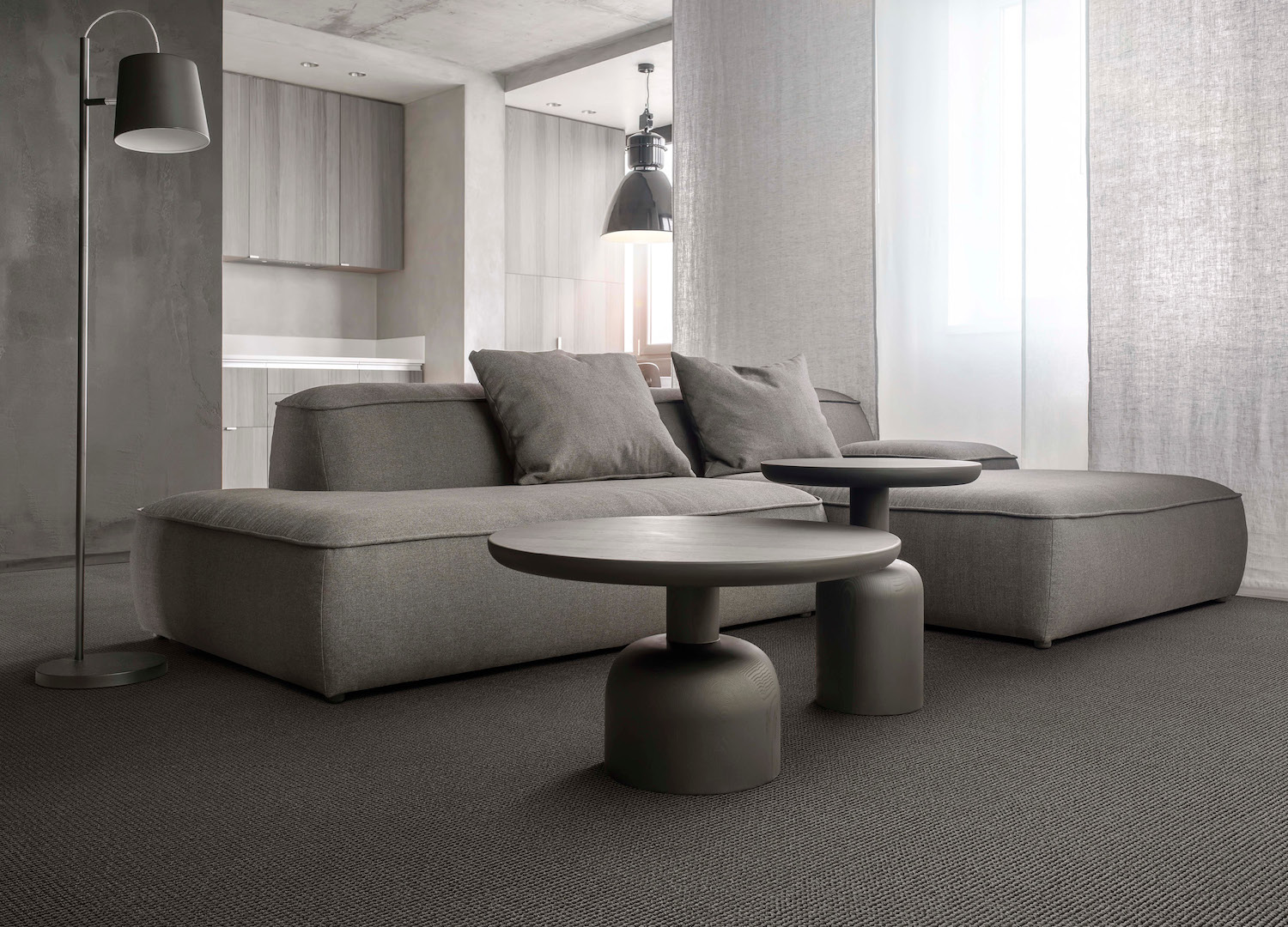
Step to It: Keeping Sustainable Flooring Options on Even Footing
photos SUPPLIED BY CARPET COURT
When looking for spaces to make sustainable selections in your home, the answer might be hiding beneath your feet. The plush, cosy feel of a good carpet under your toes can be a treat for the senses, particularly on a cold winter’s morning, but it may harbour hidden costs, for both the environment and your own health.
Many carpets on the market are made from synthetic, petroleum-based materials, and are filled with toxic chemical dyes, adhesives and glues. These mixtures are what create the distinctive ‘new carpet smell’ – actually the emission of volatile organic compounds (VOCs) that can pollute the indoor air quality of your house – and take a serious toll on the environment in their production and disposal processes.
Those looking for more environmentally friendly floor coverings can turn to natural fibre options, including plant-based materials such as jute, sisal, seagrass and coir (coconut fibres), or the king of natural carpeting – wool. Biodegradable, recyclable, naturally stain-resistant and durable, wool can stand up to a lot of being stood on without wearing out. This makes it a good long-term investment, but it is an investment, often carrying a hefty price tag we can only hope goes back to keeping those sheep in the good grass.

If you’re hoping to be more economical in your environmentalism, there are affordable alternatives. Created by Italian firm Aquafil, ECONYL® regenerated nylon is a 100% regenerated nylon made from synthetic waste like industrial plastic, fishing nets reclaimed from the ocean and even old carpets rescued from landfills.
The production of ‘virgin’ nylon requires worrying amounts of water and oil, and emits a substantial amount of nitrous oxide which has significant global warming potential as a greenhouse gas. (On a per-molecule basis, nitrous oxide has 265 times the atmospheric heat-trapping ability of carbon dioxide.) The end product is non-biodegradable and, according to Good On You, is estimated to make up to 40% of man-made plastic waste in the oceans.
In contrast, ECONYL® regenerated nylon is created using a closed-loop regeneration system which uses less water and creates less waste than traditional nylon production methods. Waste is collected, cleaned and shredded, depolymerised to extract nylon, polymerised, transformed into yarn, and then re-commercialised into textile products. Infinitely recyclable without losing quality, the aim is to decrease global nylon production by regenerating that which is already in circulation and replacing virgin nylon in everyday products, clothes and furnishings.

Initially picked up by ethically focused luxury fashion brands like Stella McCartney, ECONYL® regenerated nylon is now available through more mainstream accessible vendors, such as Carpet Court, whose eco-friendly carpeting range contains an ECONYL® regenerated nylon collection.
ECONYL® yarn carpets boast all the benefits of nylon – durability, affordability and resistance to stains and fading – without compromising on the climate cost. They’re also lower in VOCs making the carpets allergen friendly and less inclined to impact your indoor air quality. Gentle on your feet, the ECONYL® regenerated nylon carpets boast a dense cut pile, and twist fibre that’s warm in the winter and welcoming in the summer.
At the end of the day, every material has its impact – with no commercial recycling facilities that recycle used carpets and rugs currently available for the general public in Australia, consider re-use and responsible disposal options at the end of its lifecycle too – and if you do choose to carpet your space, think of Mother Earth as you deck out your hearth.



